GardenersHelper
In Memoriam
- Messages
- 6,344
- Name
- Nick
- Edit My Images
- Yes
These were captured hand-held at a local nature reserve last week using my FZ330 bridge camera with two stacked Raynox 150 close-up lenses and KX800 twin flash. The raw files were batch processed in DXO Optics Pro and Silkypix, with image-specific adjustments in Lightroom. There are 1300 pixel high versions of these images in this album at Flickr.
I came across a spider's web that had caught quite a lot of small prey.
#1
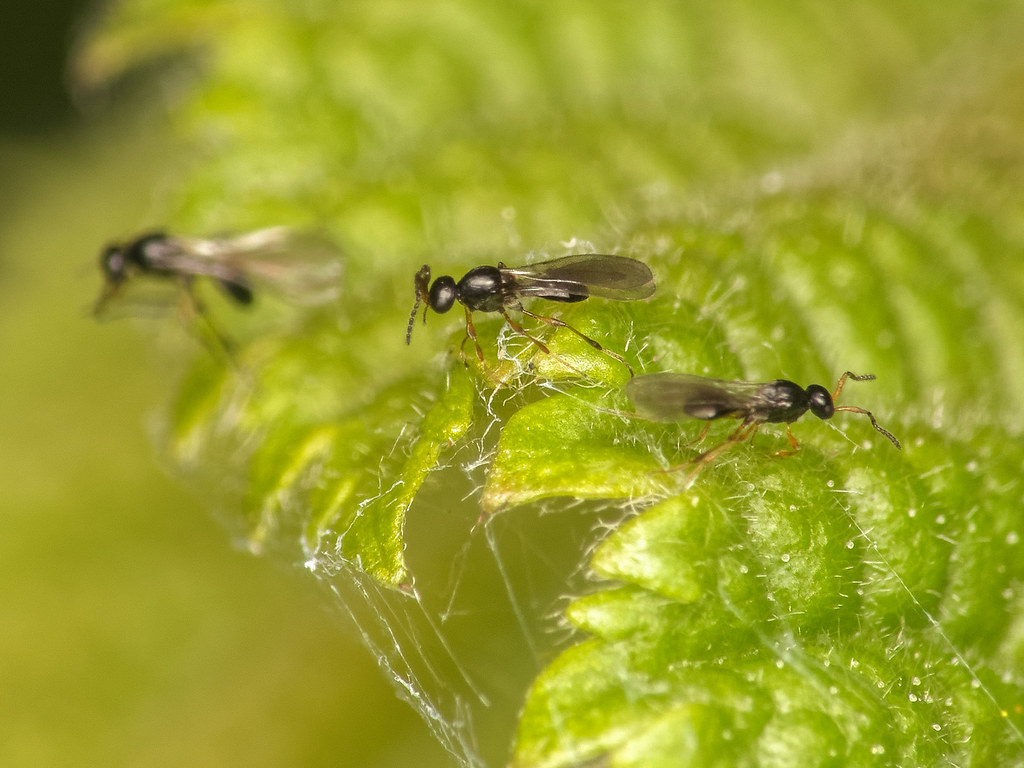
1172 05 2017_05_18 P1240836_DxO 0100RAW01cP SP7 LR6 1300h by gardenersassistant, on Flickr
While I photographed one of the prey that was struggling to get free (and did in fact manage to free itself) I noticed another of the prey that looked unusual, being very red, seen here at the bottom left, out of focus.
#2

1172 06 2017_05_18 P1240876_DxO 0100RAW01cP SP7 LR6 1300h by gardenersassistant, on Flickr
It turned out not to be prey. It was a predator, feasting on one of the spider's catches. I think it may have been a Red Velvet mite.
#3
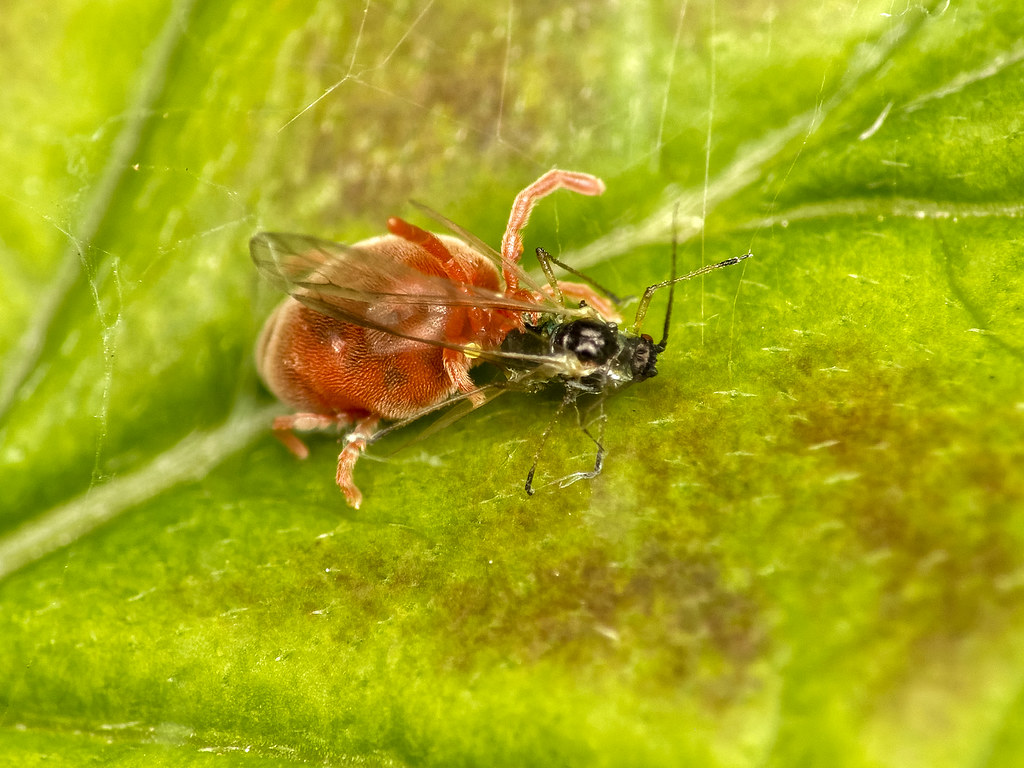
1172 07 2017_05_18 P1240881_DxO 0100RAW01cP SP7 LR6 1300h by gardenersassistant, on Flickr
And then the spider turned up .......
#4
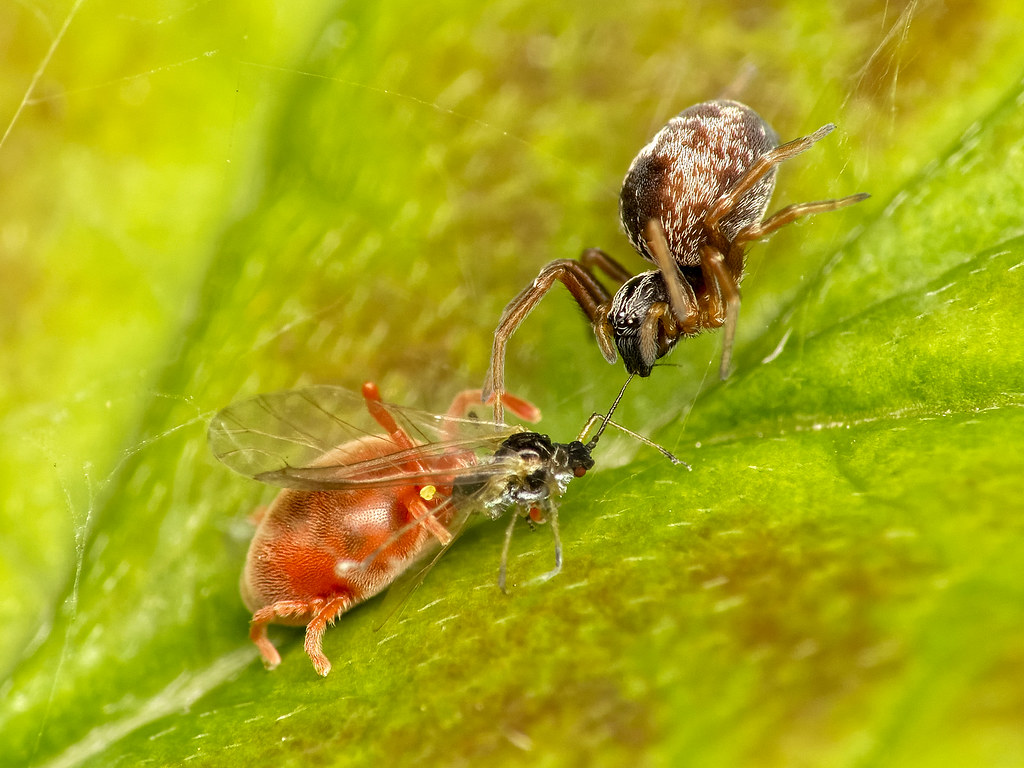
1172 08 2017_05_18 P1240900_DxO 0100RAW01cP SP7 LR6 1300h by gardenersassistant, on Flickr
........ and moved in closer.
#5
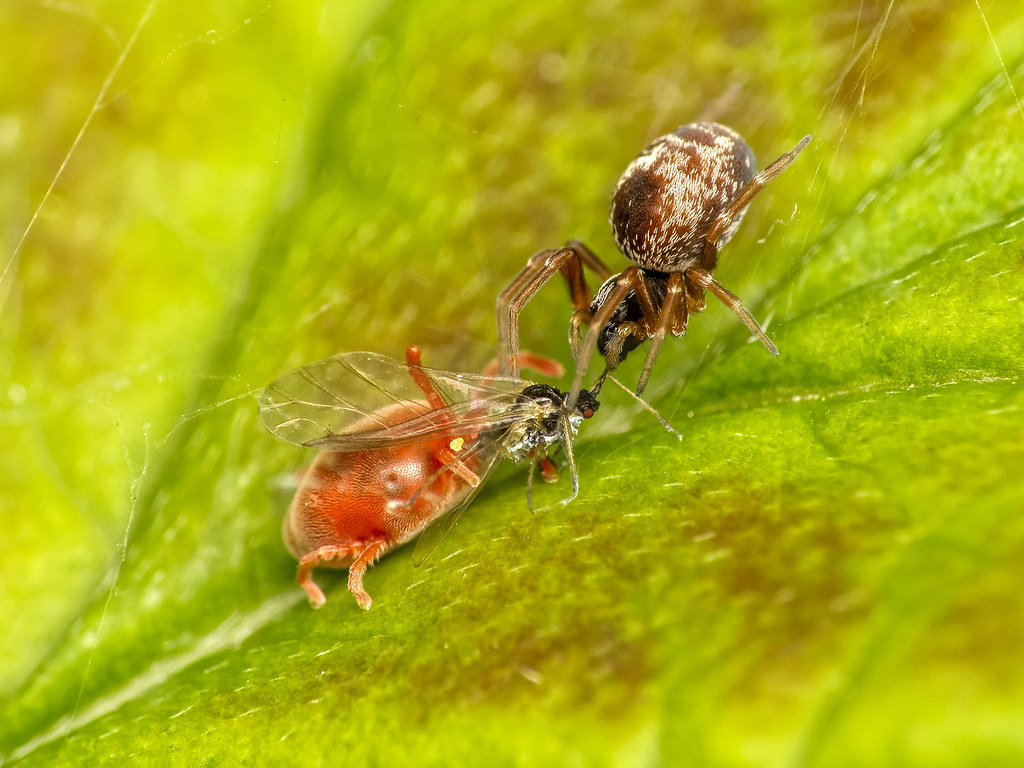
1172 09 2017_05_18 P1240904_DxO 0100RAW01cP SP7 LR6 1300h by gardenersassistant, on Flickr
I don't know if there was any direct contact between the two predators, or some sort of non-contact communication/threat, but the mite backed off .........
#6

1172 10 2017_05_18 P1240919_DxO 0100RAW01cP SP7 LR6 1300h by gardenersassistant, on Flickr
........ and wandered off.
#7

1172 11 2017_05_18 P1240933_DxO 0100RAW01cP SP7 LR6 1300h by gardenersassistant, on Flickr
I found it odd that where previously the mite's body seemed to be smoothly rounded (#3, #4), it had become pitted with indentations.
#8
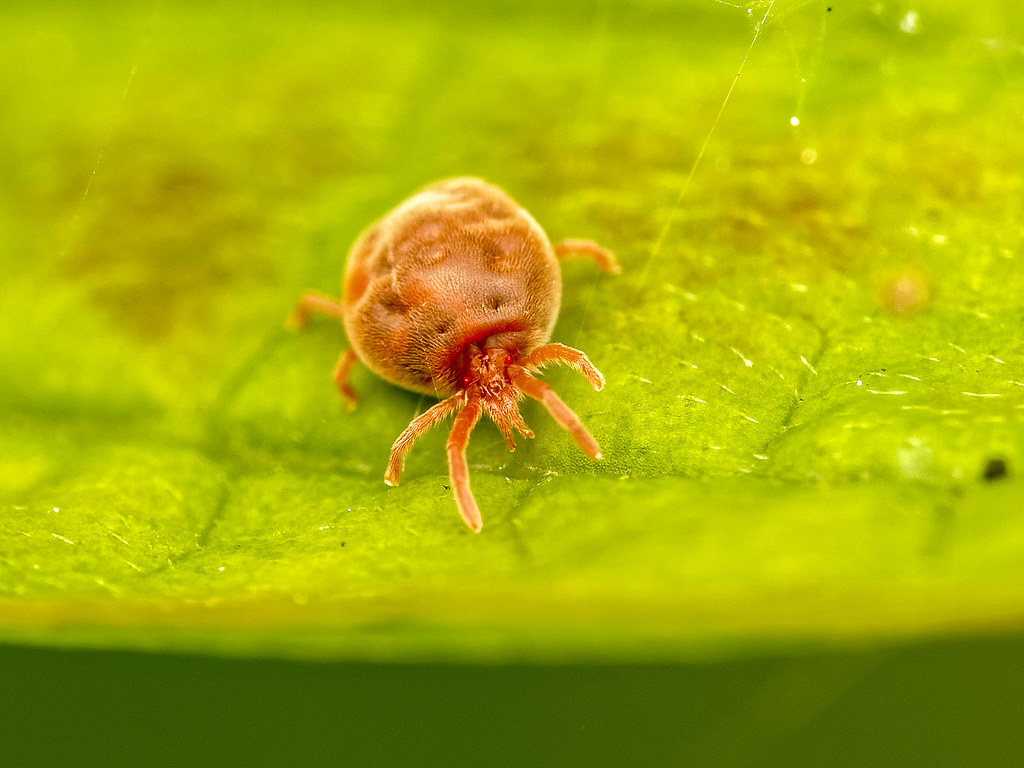
1172 13 2017_05_18 P1240939_DxO 0100RAW01cP SP7 LR6 1300h by gardenersassistant, on Flickr
I think in #5 you can see one of these pits starting to develop. I have another image (that I didn't put into the album but perhaps I should have) which shows that pit having grown larger.
I suppose the smooth rounded look might be an optical illusion in #3 and #4, but seeing that pit grow makes me think it is real. Perhaps they are breathing holes opening and closing.
I came across a spider's web that had caught quite a lot of small prey.
#1

1172 05 2017_05_18 P1240836_DxO 0100RAW01cP SP7 LR6 1300h by gardenersassistant, on Flickr
While I photographed one of the prey that was struggling to get free (and did in fact manage to free itself) I noticed another of the prey that looked unusual, being very red, seen here at the bottom left, out of focus.
#2

1172 06 2017_05_18 P1240876_DxO 0100RAW01cP SP7 LR6 1300h by gardenersassistant, on Flickr
It turned out not to be prey. It was a predator, feasting on one of the spider's catches. I think it may have been a Red Velvet mite.
#3

1172 07 2017_05_18 P1240881_DxO 0100RAW01cP SP7 LR6 1300h by gardenersassistant, on Flickr
And then the spider turned up .......
#4

1172 08 2017_05_18 P1240900_DxO 0100RAW01cP SP7 LR6 1300h by gardenersassistant, on Flickr
........ and moved in closer.
#5

1172 09 2017_05_18 P1240904_DxO 0100RAW01cP SP7 LR6 1300h by gardenersassistant, on Flickr
I don't know if there was any direct contact between the two predators, or some sort of non-contact communication/threat, but the mite backed off .........
#6

1172 10 2017_05_18 P1240919_DxO 0100RAW01cP SP7 LR6 1300h by gardenersassistant, on Flickr
........ and wandered off.
#7

1172 11 2017_05_18 P1240933_DxO 0100RAW01cP SP7 LR6 1300h by gardenersassistant, on Flickr
I found it odd that where previously the mite's body seemed to be smoothly rounded (#3, #4), it had become pitted with indentations.
#8

1172 13 2017_05_18 P1240939_DxO 0100RAW01cP SP7 LR6 1300h by gardenersassistant, on Flickr
I think in #5 you can see one of these pits starting to develop. I have another image (that I didn't put into the album but perhaps I should have) which shows that pit having grown larger.
I suppose the smooth rounded look might be an optical illusion in #3 and #4, but seeing that pit grow makes me think it is real. Perhaps they are breathing holes opening and closing.


